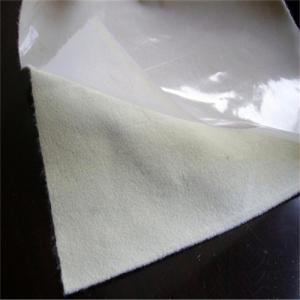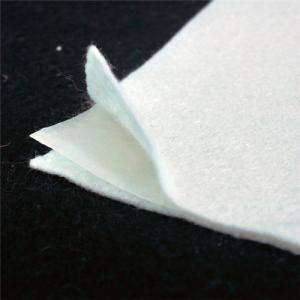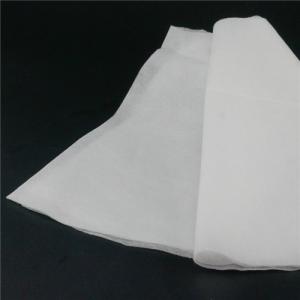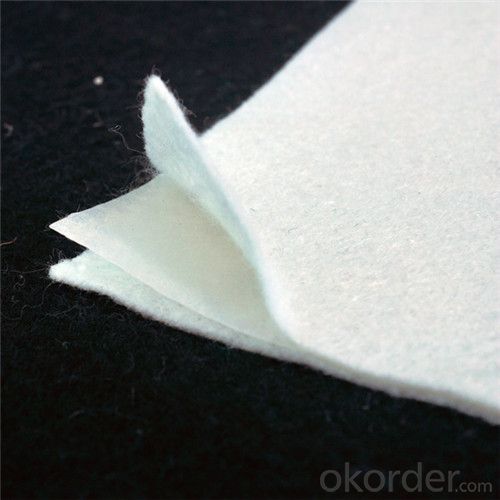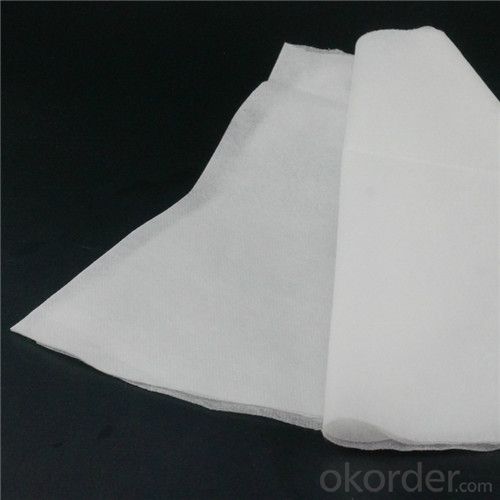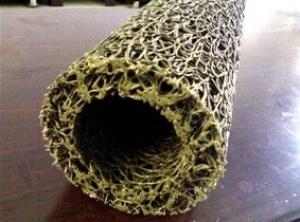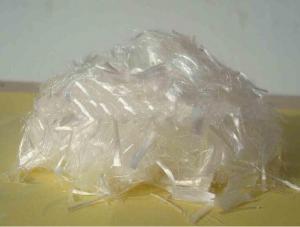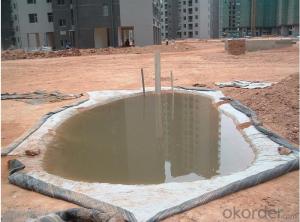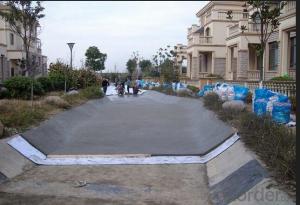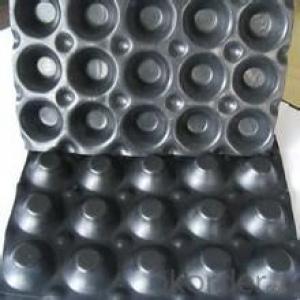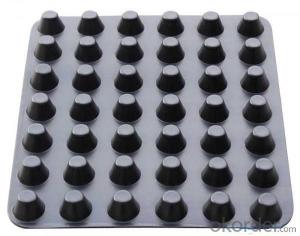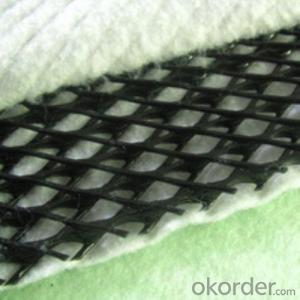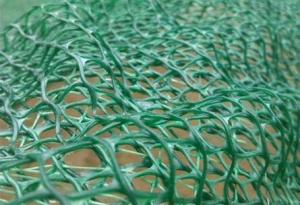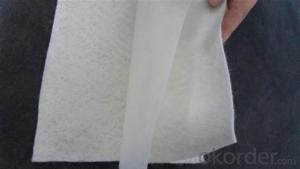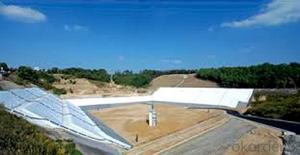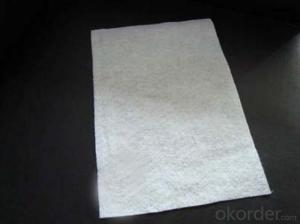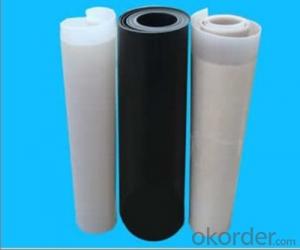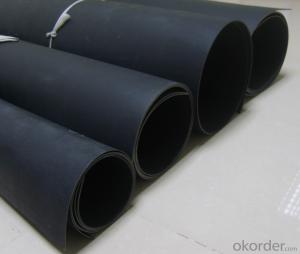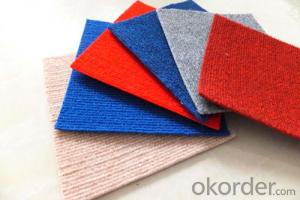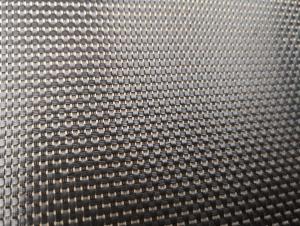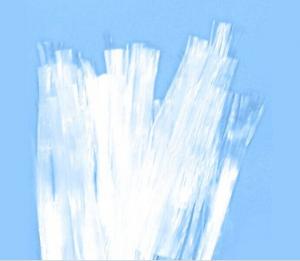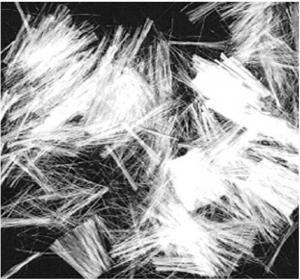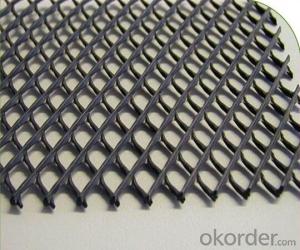Composite Geomembrane for Waterproof by Geotextile and Geomembrane
- Loading Port:
- Qingdao
- Payment Terms:
- TT or LC
- Min Order Qty:
- 1000 m²
- Supply Capability:
- 100000 m²/month
OKorder Service Pledge
OKorder Financial Service
You Might Also Like
Composite Geomembrane Description:
Geotextile composite geomembrane is made by nonwoven geotextile and PE/PVC geomembrane. It has geotextile and geomembrane, geomembrane with nonwoven geotextile on both sides, nonwoven geotextile with geomembrane on both sides, multilayer geotextile and geomembrane.
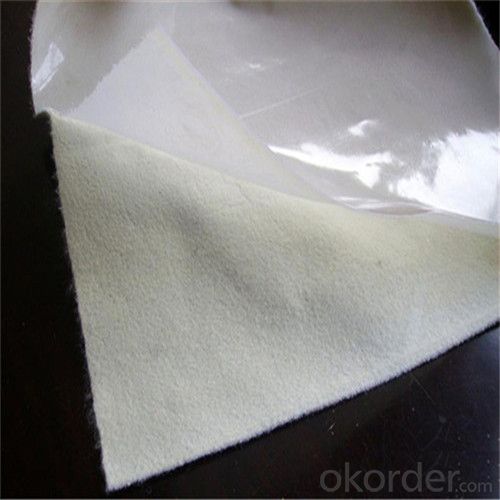
Composite Geomembrane Specification:
1)One geotextile and one geomembrane: geotextile 100-800g/m2, geomembrane 0.1- 1.0mm
2)Geomembrane with geotextile on both sides: geotextile 100-400g/m2, geomembrane 0.2-1.0mm
3)Geotextile with geomembrane on both sides: geotextile 100-800g/m2, geomembrane 0.1-0.8mm
Composite Geomembrane Property:
Good flexibility; separation, reinforcement and protection; waterproofing
Composite Geomembrane Application:
Reinforcement in channel; embankment, reservoir; waterproofing in reservoir; rock fill dam and transportation tunnel.
Packaing
Our packing is strong enough to withstand bumping and rough handling under normal condition.
We can accept add customer's logo on the package.
Our Service
1. OEM Manufacturing welcome.
2. Free Sample to see our quality.
3. We will reply you for your inquiry in 24 hours.
4. After sending, we will track the products for you once every two days, until you get the products. When you got the goods, test them, and give me a feedback.If you have any questions about the problem, contact with us, we will offer the solve way for you.
- Q: What are the different material compositions of earthwork products?
- Earthwork products can be made from a variety of materials, including natural materials such as soil, gravel, and rocks, as well as synthetic materials such as geosynthetics and geotextiles. These different material compositions are chosen based on the specific requirements of the project, including factors like strength, drainage, and environmental considerations.
- Q: How do earthwork products help with groundwater recharge?
- Earthwork products help with groundwater recharge by creating structures and landscapes that facilitate the infiltration of rainwater into the ground. For example, techniques like contouring, terracing, and bioswales can be used to slow down the flow of water, allowing it to percolate into the soil rather than running off. Additionally, the use of permeable materials, such as gravel or porous concrete, in parking lots or walkways can further enhance groundwater recharge by enabling water to seep through and replenish underground aquifers. Overall, earthwork products provide the necessary infrastructure and design elements to maximize the replenishment of groundwater resources.
- Q: How do earthwork products affect the overall structural stability of a project?
- Earthwork products can have a significant impact on the overall structural stability of a project. These products, such as soil, rock, and other materials, are used to create foundations, embankments, and other structural elements. The selection and quality of earthwork products directly influence the strength, load-bearing capacity, and long-term durability of the project. Proper analysis, testing, and compaction of these materials ensure that they provide adequate support and resistance to stress, preventing settlement, slope failures, and other potential structural issues. Therefore, careful consideration and management of earthwork products are crucial in ensuring the overall stability and integrity of the project.
- Q: How are geotextile filter fabrics used in earthwork?
- Geotextile filter fabrics are used in earthwork to separate different types of soil and to prevent the mixing or migration of particles. They act as a barrier, allowing water to pass through while retaining the soil, which helps in drainage and erosion control. Additionally, these fabrics also provide reinforcement and stability to the soil, making them effective in various applications such as road construction, retaining walls, and landscaping projects.
- Q: How do geosynthetic clay liners contribute to environmental containment?
- Geosynthetic clay liners (GCLs) contribute to environmental containment by providing a barrier against the migration of contaminants in various applications such as landfill liners, mining waste containment, and wastewater treatment. GCLs consist of layers of geotextiles encapsulating a layer of sodium bentonite clay, which swells upon contact with water, forming a low permeability barrier. This prevents the movement of liquids, gases, and pollutants, effectively containing them within the designated area. GCLs also offer added benefits like erosion control, stability enhancement, and reducing the need for natural clay materials, making them a sustainable and efficient solution for environmental containment.
- Q: What are the specific applications of geotextile containers in earthwork projects?
- Geotextile containers, also known as geobags or geotextile bags, have several specific applications in earthwork projects. They are commonly used for erosion control, shoreline protection, and slope stabilization. Geotextile containers are also utilized for geotechnical applications such as retaining walls, embankment construction, and land reclamation. Additionally, they are used in dewatering operations, where they act as sediment filtration systems. Overall, geotextile containers offer a versatile and effective solution for various challenges encountered in earthwork projects.
- Q: How do earthwork products contribute to erosion control on river and canal banks?
- Earthwork products, such as retaining walls, gabions, and geotextiles, play a vital role in erosion control on river and canal banks. These products help to stabilize the soil, prevent it from being washed away by water currents, and reduce the impact of erosion caused by waves, tides, and other natural forces. Additionally, earthwork products can redirect the flow of water, minimizing its erosive power, and channeling it away from vulnerable areas. By providing a strong and durable barrier against erosion, these products help to protect river and canal banks, ensuring their long-term stability and preventing environmental damage.
- Q: What are the benefits of using geomembranes for pond liners?
- Geomembranes offer several benefits for pond liners. Firstly, they provide a strong and durable barrier that effectively prevents seepage of water and contaminants. This helps in maintaining the water quality and prevents any potential harm to the ecosystem. Additionally, geomembranes are highly resistant to UV rays, chemicals, and extreme temperatures, making them suitable for long-term use in various environmental conditions. They are also flexible, allowing for easy installation and customization to fit any pond shape or size. Furthermore, geomembranes are low maintenance, reducing the need for frequent repairs or replacements. Overall, the use of geomembranes as pond liners ensures efficient water management, environmental protection, and long-lasting performance.
- Q: How do earthwork products help with noise reduction?
- Earthwork products help with noise reduction by acting as a barrier or insulation against sound. These products, such as berms, retaining walls, or earthen embankments, are designed to absorb, reflect, and dampen sound waves, preventing them from traveling through and reducing the noise levels in surrounding areas. The dense and solid nature of earthwork materials helps to block and absorb sound, making them effective in reducing noise pollution.
- Q: What are the benefits of using geogrids in earthwork applications?
- Geogrids offer several benefits in earthwork applications, including improved soil stability, increased load-bearing capacity, and enhanced reinforcement of soil structures. They provide effective soil confinement and prevent lateral spreading, reducing the risks of soil erosion and slope failures. Geogrids also minimize the need for excessive excavation and the use of costly materials, making them a cost-effective solution. Additionally, they help with the redistribution of loads, enhancing the overall performance and longevity of earthwork structures.
Send your message to us
Composite Geomembrane for Waterproof by Geotextile and Geomembrane
- Loading Port:
- Qingdao
- Payment Terms:
- TT or LC
- Min Order Qty:
- 1000 m²
- Supply Capability:
- 100000 m²/month
OKorder Service Pledge
OKorder Financial Service
Similar products
Hot products
Hot Searches
Related keywords
